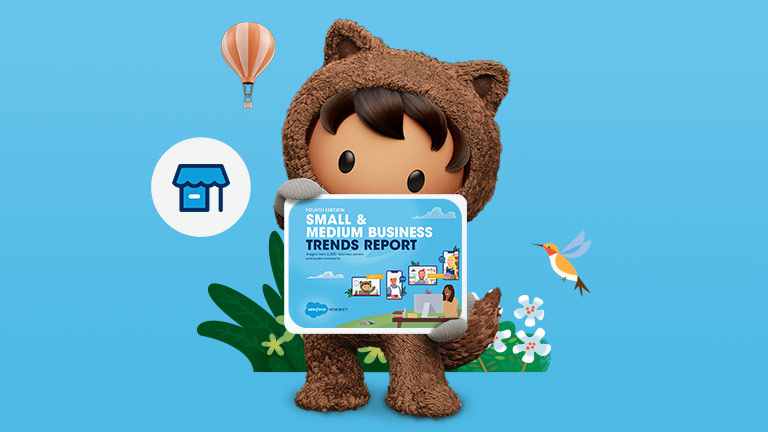In order to reach their peak potential, today’s SMEs need to get the most out of their customer data. Data not only helps businesses create better customer experiences (CX); it can help drive engagement in the workforce, unlock powerful new revenue models, improve efficiencies and cut costs.
Data is what’s driving today’s CX, as businesses compete to enhance their customer experience. But if you’re not managing your customer data well, it will be hard to leverage it properly. Further, if you’re not leveraging your data at all, you’ll fall behind businesses that are.
What is customer data management?
Customer data management refers to how businesses organise, secure and deploy their customer data. Effective customer data management isn’t just about creating a storehouse; it’s about optimising that storehouse so that data can be used to improve business processes, create customer journeys, drive productivity and help organisations make smarter strategic decisions. One of the keys concerns of customer data management is protecting customer data while still being able to use it to fuel business intelligence. It can be a tricky balance, but an important one to get right.
How can customer data management help SMEs provide a better customer experience?
Businesses can use customer data to understand preferences, anticipate needs, suggest relevant products and build better relationships. In short, customer data provides businesses with a view of what the customer wants – and how they can give it to them.
Crafting an exceptional customer experience has become paramount, as more and more companies are looking at their CX as their differentiator, or the thing that sets them apart from their competitors. Whereas businesses used to commonly compete on products, prices or convenience, the customer experience is now a core commodity.
For example, Netflix and Spotify have built empires on their personalised customer experiences, setting an incredibly high bar for every other company and every subsequent interaction a consumer had. Those game-changing experiences wouldn’t have been possible without mountains of data – and effective customer data management.
The top 6 benefits of good customer data management
Good customer data management doesn’t just benefit businesses; it benefits their customer as well. Here are some of the top benefits of good customer data management.
Faster response times, enabling SMEs to address rapidly changing market conditions.
A robust database of customer information, preferences and behaviours, helping businesses launch new products, improve service and increase long-term loyalty.
A secure system to fuel business analytic technologies and take a deeper dive into what’s working and what’s not.
Better cyber-security so customers can trust that their data is in safe hands.
Improved intelligence for the workforce, helping teams perform their tasks more effectively and efficiently.
Ability to break siloes and share data across departments and functions, improving collaboration and offering real-time visibility of customer history.
How to leverage customer data management to create a next-level CX
The vast majority of data is free-floating and unstructured. In order to put your data to work, you’ll want to use a customer data management system. This system should be able to store data from various touchpoints, so that you can then leverage data analytics tools to make that data ‘smart’. Once your data has been turned into intelligence, you can use it to centre your processes around the customer and start building better relationships.
Here are some ways you can create a customer-orientation strategy with data.
Gather feedback across touchpoints. Customer data management depends on gathering information from everyday processes and a range of touchpoints. You’ll want to know how your customers are engaging with your business, on what channels, and how well those channels are supporting the customer journey. Once you have a holistic view of the customer experience, you can look at what channels are excelling and why, and use that data to optimise any channels that may not be providing the best customer experience.
Listen in on social media. It used to be that a customer might tell a couple of friends about a poor experience with a brand – now they can tell the entire world. Monitor various social media channels to see what people are saying. Look for recurring complaints and common concerns, and see if these might hint at issues upstream that may need to be addressed. There’s a debate about whether social media constitutes unstructured data, but there’s no debate about its importance.
Set KPIs that put the customer first. Customer data can tell you just as much about your business as it can about the customer. If an uncommonly large percentage of customers are bypassing certain channels, such as chatbots or self-service portals, that may not be a preference – you may have a bottleneck. Set KPIs (Key Performance Indicators) that don’t just measure your business’s performance, but the customers’. Look for any outlying data, and then see what might be causing those spikes.
Ensure stringent security protocols. SMEs will want to use customer data management to drive business improvements as much as possible, but there’s another concern at play: trust. Once their data is compromised customers won’t trust a business again, no matter how great their CX is. Finding the right balance between being aggressive with customer data and keeping it under lock and key is crucial to get right. Luckily, businesses can protect customer data by using more data, as security analytics tools can help to monitor for inconsistencies and fraud.
Use data to personalise loyalty programmes. One of the biggest benefits of a good customer data management system is its ability to help you segment audiences. Everyone responds to messaging differently, and everyone looks for different things in a product or a business. By using customer data to study behavioural analytics, you can tailor loyalty programmes that deliver delightful surprises and rewards to your most loyal fans. After all, the most fulfilling relationships are personal, long-lasting ones.
Aim your data at a business goal. Data can be very effective for driving decision-making, especially if you already have a specific goal in mind. Looking to increase upselling and cross-selling opportunities? Your customer data can help you identify when and where those opportunities are, and how you might best approach them. Looking at general data can offer some surprising and potentially business-changing perspectives, but targeted data can help you drill down into the nitty gritty details of your ultimate business goals.
The secret of great customer data management? An exceptional CX starts with CRM
CRM (Customer Relationship Management) systems allow you to collect, store and leverage customer data in one place. The use of CRM tools has seen a large increase, as businesses focus on building stronger customer relationships and improving customer retention. When choosing the right CRM for your business, you’ll want to focus on your organisation’s unique needs and goals, as well as your existing infrastructure.
While there are plenty of different features you’ll want to consider in CRM platforms, there’s one thing to always remember: your customer is at the heart of your change. So, when you choose your customer data management system, don’t choose one just to improve internal efficiencies, choose one that will transform your customer experience.
To see how customer data management tools can help your business work smarter and build better connections, you can read more about CRM.






